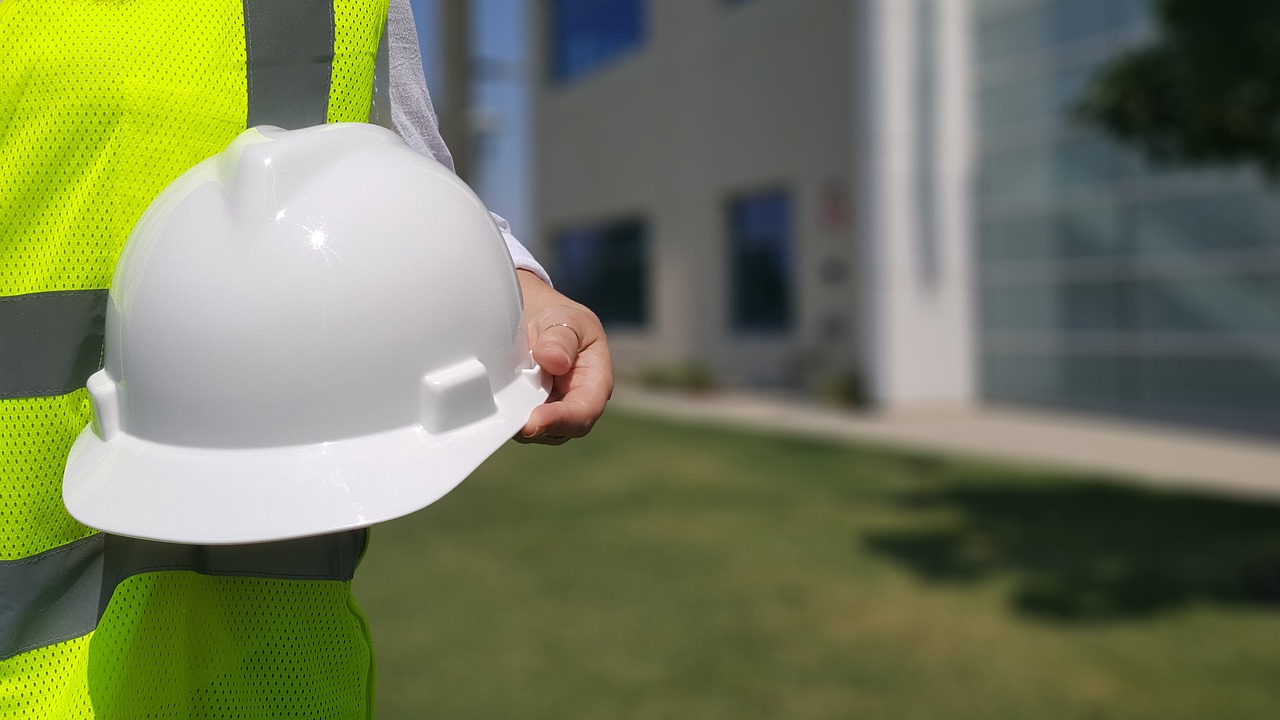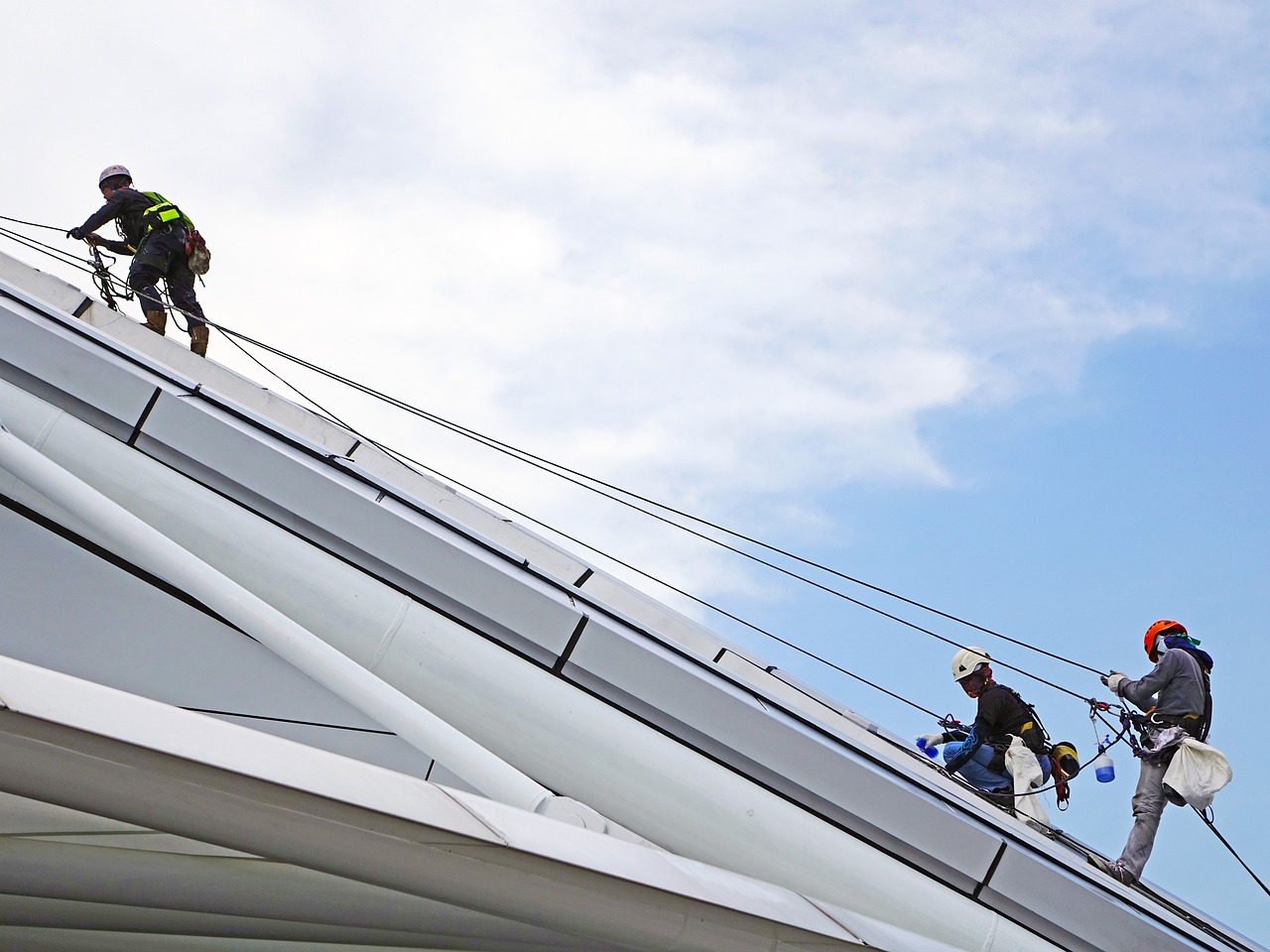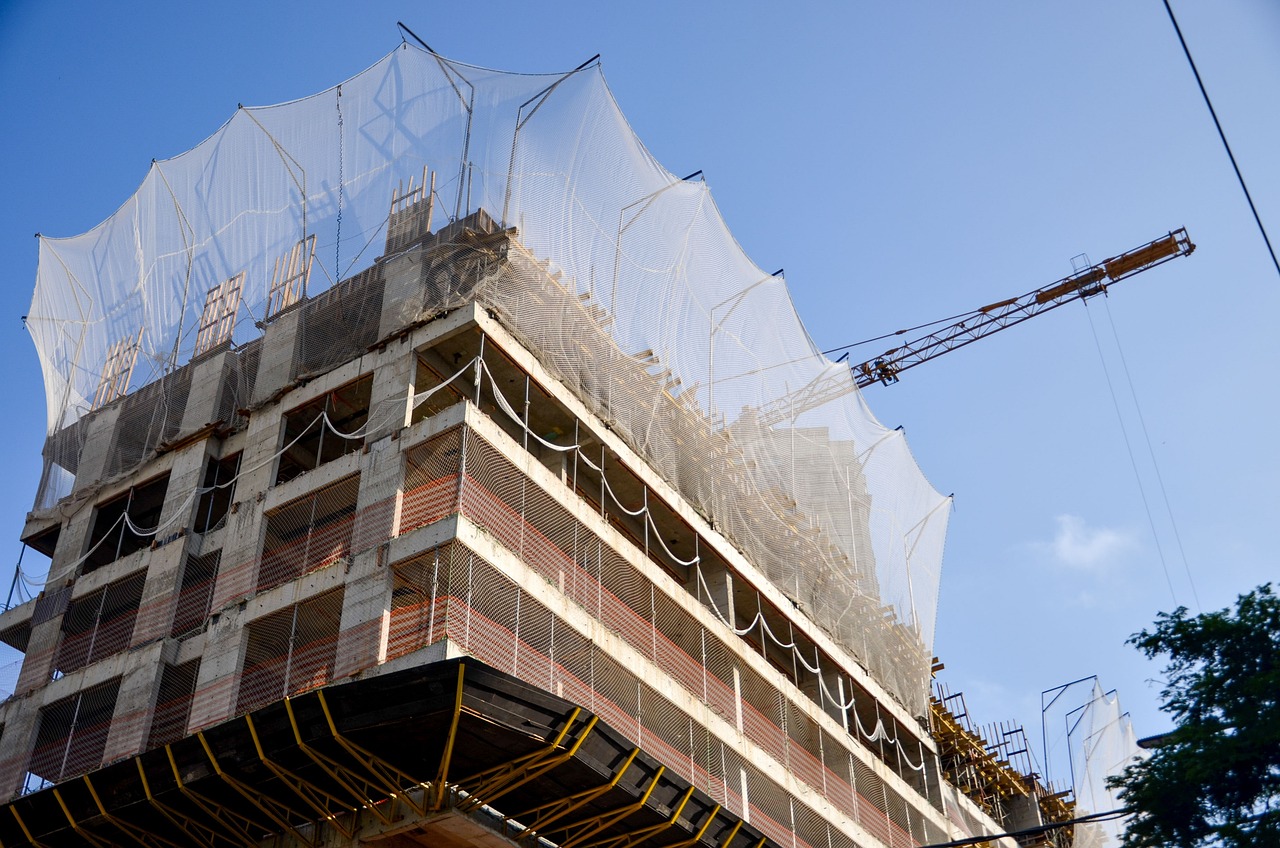How to Survive Urban Nights - Safety Tips
Urban nights can be exhilarating, filled with vibrant lights, lively music, and the promise of adventure. However, they can also pose significant risks if you're not prepared. This article provides essential tips and strategies for navigating urban environments safely at night, ensuring you stay aware and protected from potential dangers while enjoying the city's nightlife. Whether you're heading out for a night on the town or just passing through, being informed can make all the difference.
Identifying the common risks encountered in urban settings at night is crucial. Cities, while bustling with life, can have their dark corners. Factors such as high crime rates, poorly lit areas, and the presence of intoxicated individuals can create a hazardous environment. It's important to remember that not every city is the same; some areas are safer than others. Always do your research before heading out. For instance, check local crime statistics and familiarize yourself with the neighborhoods you'll be visiting. Understanding these risks allows you to make informed decisions and helps you develop a safety plan.
Maintaining awareness is key to personal safety. Have you ever walked through a crowded street, lost in thought, only to suddenly feel uneasy? That's your instinct kicking in. It's essential to stay alert, recognize potential threats, and trust your gut feelings when navigating urban areas at night. Here are some techniques to enhance your awareness:
- Keep your head up: Avoid staring at your phone or getting too absorbed in music. Look around you and be conscious of the people and environment.
- Know your route: Familiarize yourself with your destination beforehand. This way, you can avoid wandering into unsafe areas.
- Trust your instincts: If something feels off, don't hesitate to change your path or seek help.
Leveraging technology can significantly enhance your safety. With the right tools at your fingertips, you can navigate urban landscapes more confidently. There are numerous apps and devices designed to help you stay connected with friends and alert authorities in emergencies. For example, consider using emergency contact apps that allow you to share your location and send alerts to trusted contacts when you feel unsafe. Additionally, navigation tools can guide you through unfamiliar areas, providing safe route options and real-time updates to avoid dangerous neighborhoods.
Emergency contact apps are a lifesaver when you're out at night. These apps often come with features that allow you to quickly share your location with friends or family. Some even have a panic button that sends alerts to your contacts and local authorities. It’s like having a safety net right in your pocket, ensuring you can reach out for help at a moment's notice.
When it comes to getting around, navigation tools can be invaluable. Popular mapping apps not only provide directions but also highlight safe routes based on real-time data. They can alert you to areas with higher crime rates or let you know if there are public transport options nearby. Think of these apps as your personal tour guides, helping you avoid potential pitfalls while exploring the nightlife.
Traveling with others can significantly reduce risks. There's strength in numbers, and being part of a group can make you feel more secure. When you're out with friends, you naturally look out for one another, sharing vigilance and increasing safety. In urban nightlife scenarios, this can be especially beneficial. A group can deter unwanted attention and can also help in case of emergencies. So, next time you plan a night out, consider gathering a few friends to join you!
Selecting the right transportation is vital for nighttime safety. Whether you’re heading to a party or returning home, the mode of transport you choose can impact your overall safety. Rideshare services, public transport, and even walking can all be viable options if approached with caution. Planning your route ahead of time can save you from unnecessary stress and potential danger.
Rideshare services can offer a convenient and safe way to travel at night. However, it's essential to use these services securely. Always verify the driver's details before getting into the car, and share your ride information with a friend or family member. This way, someone knows your whereabouts, adding an extra layer of security. Think of it as having a virtual buddy keeping an eye on you while you travel.
Using public transport requires caution. While it can be an economical choice, especially in bustling cities, it's important to stay alert. Avoid empty cars or buses late at night, and always choose well-lit stations. Keep your belongings close and be aware of your surroundings. If something feels off, don’t hesitate to move to a different area or get off at the next stop. Remember, safety first!
Q: What should I do if I feel unsafe while walking at night?
A: Trust your instincts. If you feel uncomfortable, seek a well-lit area, and consider calling a friend or using a rideshare service.
Q: Are there any apps specifically for personal safety?
A: Yes! There are several apps designed for personal safety, including those that allow you to share your location and send alerts to contacts.
Q: Is it safe to use public transport at night?
A: While public transport can be safe, it’s important to stay alert, avoid empty vehicles, and choose well-lit stations. Always be aware of your surroundings.

Understanding Urban Risks
When you step into the vibrant world of urban nightlife, it’s essential to understand the unique risks that come along with it. Cities are full of energy, excitement, and opportunities, but they also harbor potential dangers that can catch you off guard. One of the most pressing concerns is the crime rate in certain areas, which can vary significantly from one neighborhood to another. For instance, some districts may be bustling with activity and feel perfectly safe, while others might be less welcoming after dark. It’s crucial to familiarize yourself with these dynamics before heading out.
Moreover, poorly lit streets can create an atmosphere of uncertainty. Imagine walking down a dimly lit alley; it’s easy to feel vulnerable. The lack of visibility can make it challenging to spot potential threats or even navigate your way back to safety. This is why being aware of your surroundings is not just a good habit; it's a survival skill. Trusting your instincts can be your best defense. If something feels off, it probably is. Your gut feeling is often your first line of defense against danger.
In addition to crime and lighting, consider the social dynamics at play. Urban areas can attract a diverse range of individuals, and while most are harmless, there can be situations where you might encounter aggressive behavior or harassment. Understanding the social landscape can help you navigate these interactions more safely. Always be prepared to adjust your route, change your plans, or even seek help if you feel uncomfortable.
To illustrate the varying risks, let’s take a look at a comparison of urban areas based on their safety ratings:
| Neighborhood | Crime Rate (per 1,000 residents) | Safety Rating (1-10) |
|---|---|---|
| Downtown | 15 | 7 |
| Uptown | 5 | 9 |
| East Side | 25 | 4 |
| West End | 10 | 8 |
This table highlights how different neighborhoods can present varying levels of risk. As you can see, areas with higher crime rates tend to have lower safety ratings. It’s essential to do your research and plan your outings accordingly. By understanding these risks, you can make informed decisions about where to go and when to stay away.
In conclusion, navigating urban environments at night requires a keen awareness of the risks involved. By recognizing the potential dangers, trusting your instincts, and staying informed about your surroundings, you can enjoy the nightlife while keeping yourself safe. Remember, the city is a beautiful place filled with opportunities, but it’s always better to be cautious and prepared.

Staying Aware of Your Surroundings
When it comes to navigating the vibrant yet unpredictable nightlife of urban areas, is your best defense. It’s like walking through a bustling market; you wouldn’t want to be so engrossed in your shopping that you miss the stall right next to you that’s selling the best street food, right? Similarly, being alert in an urban environment can help you spot potential dangers before they become a problem. This means not just looking at your phone or getting lost in your thoughts, but actively engaging with the world around you.
One effective technique to enhance your situational awareness is to adopt the 360-degree scanning method. Imagine you’re a hawk, soaring high above the cityscape, constantly glancing around to spot any movement or changes in your environment. This can involve:
- Periodically looking over your shoulder.
- Noticing the people around you, especially if they seem out of place.
- Being mindful of the sounds in your environment, such as footsteps, conversations, or sudden noises.
Another crucial aspect of awareness is trusting your instincts. If something feels off, it probably is. Consider it your internal alarm system. For example, if you find yourself in a poorly lit alley or an area that feels deserted, don’t hesitate to change your route. Just like a skilled chess player anticipates their opponent’s moves, you should always be thinking a few steps ahead, ready to adapt to whatever the city throws your way.
Furthermore, it’s essential to recognize the common signs of potential danger. These can include:
- Groups of individuals loitering in a way that seems suspicious.
- Unusual behavior from others, such as someone following you or acting aggressively.
- Areas that are unusually quiet, which can often be more dangerous than busy streets.
Remember, being aware doesn’t mean being paranoid; it means being proactive. Just like a seasoned traveler knows to keep their belongings secure, you should also keep your wits about you. A little vigilance goes a long way in ensuring that your urban adventures remain enjoyable and safe.
Q: How can I improve my awareness while walking at night?
A: Practice the 360-degree scanning method, stay off your phone, and trust your instincts. Keep your head up and engage with your surroundings.
Q: What should I do if I feel unsafe?
A: If you feel uneasy, change your route, head towards well-lit areas, and consider contacting a friend or using a rideshare service to get to safety.
Q: Are there specific apps that can help with safety?
A: Yes, there are several safety apps that allow you to share your location with trusted contacts, alert authorities, and provide emergency assistance.

Using Technology for Safety
In today's fast-paced world, technology plays an essential role in enhancing our safety, especially when navigating urban environments at night. With the right tools at your fingertips, you can significantly reduce risks and feel more secure while exploring the city's nightlife. Imagine having a personal safety assistant right in your pocket! This is where various apps and devices come into play, offering features that allow you to stay connected, informed, and safe.
One of the most valuable aspects of technology is its ability to keep you connected with your friends and family. For instance, there are several emergency contact apps designed specifically for situations when you feel unsafe. These apps allow you to share your real-time location with trusted contacts, ensuring that someone is aware of where you are at all times. Additionally, many of these applications come equipped with features that let you send an alert to your contacts with just a single tap, providing peace of mind as you navigate through potentially risky areas.
Moreover, navigation tools have evolved tremendously, making it easier than ever to find safe routes through unfamiliar neighborhoods. Popular mapping apps not only guide you to your destination but also offer options to avoid high-crime areas or poorly lit streets. With real-time updates, these apps can alert you to any unexpected hazards along your route, helping you make informed decisions about your travel plans. Imagine walking through a vibrant city, knowing that your phone is constantly working to keep you safe!
In addition to navigation and emergency apps, don't overlook the power of social media. Many platforms now have built-in safety features that allow you to check in with friends or share your location temporarily. This can be particularly useful during nights out, as you can easily notify your friends of your whereabouts, making it less likely for you to feel isolated or vulnerable. After all, there’s strength in numbers, even when those numbers are just a few taps away on your smartphone!
To sum it up, leveraging technology for safety is not just a luxury; it's becoming a necessity in our urban lives. By utilizing emergency contact apps, navigation tools, and social media safety features, you can enhance your awareness and security while enjoying everything the city has to offer. Remember, staying connected and informed is your best defense against potential dangers lurking in the shadows of urban nightlife.

Emergency Contact Apps
In today's fast-paced urban environments, feeling safe and secure is paramount, especially at night. One of the most effective ways to enhance your safety is by utilizing . These apps are designed to provide quick access to help when you need it most. Imagine being in a situation where you feel uneasy; with just a few taps on your smartphone, you can alert your friends or family, share your location, and even contact authorities. How comforting is that?
Many of these apps come equipped with features that allow you to send out distress signals or notifications to your trusted contacts. For instance, you can set up a "panic button" that, when pressed, automatically sends your location along with a pre-written message to your emergency contacts. This feature is not just a gimmick; it can be a lifeline in critical situations. Additionally, some apps offer real-time location tracking, so your loved ones can see where you are at any given moment.
Here are a few popular emergency contact apps that you might consider:
- SafeTrek: This app lets you hold down a button while walking in an area that makes you feel unsafe. If you release the button without entering your PIN, it alerts the police with your location.
- Life360: A family locator app that allows you to share your location with family members and receive alerts when they reach their destination.
- bSafe: This app features a "fake call" option, allowing you to escape uncomfortable situations by pretending to receive an important call.
Moreover, many emergency contact apps allow for customization. You can choose who to notify in case of an emergency and even add specific notes about your health or any special requirements you might have. This way, responders can have critical information at their fingertips, which can make a significant difference in emergencies.
In conclusion, integrating emergency contact apps into your nighttime urban adventures is a smart move. It’s like having a safety net that you can rely on whenever the city feels a little too overwhelming. So, as you prepare for your next night out, make sure to download and familiarize yourself with these apps. Remember, being proactive about your safety can make all the difference in ensuring a fun and secure urban experience.

Navigation Tools
When it comes to navigating urban landscapes at night, having the right at your disposal can make all the difference. Think of it like having a trusty compass in the wilderness; it provides direction and peace of mind. In the bustling city, where streets can twist and turn unexpectedly, using reliable mapping apps can help you find your way while avoiding potentially unsafe areas. Popular apps like Google Maps, Waze, and Citymapper not only help you with directions but also offer real-time updates on traffic conditions, public transit schedules, and even alerts about road closures.
One of the standout features of these navigation tools is their ability to suggest safe routes. For instance, if you’re walking home late at night, you can choose a path that takes you through well-lit streets and populated areas, rather than dark alleys or secluded shortcuts. It's like having a friend who knows the city inside and out, guiding you through the safest paths. Additionally, these apps often allow users to report hazards or incidents, contributing to a community-driven approach to safety.
Moreover, many navigation apps offer a share your location feature, which is incredibly useful when you're out and about at night. You can easily share your real-time location with friends or family, giving them peace of mind while you navigate your way through the urban jungle. This feature is particularly handy if you’re traveling alone, as it keeps your loved ones informed of your whereabouts, almost like having a virtual safety net.
In case of emergencies, knowing how to quickly access emergency services through your navigation app can be a lifesaver. Most apps have integrated features that allow you to contact local authorities or find the nearest hospital. It’s like having a guardian angel watching over you, ready to assist when needed. With all these features combined, navigation tools not only help you reach your destination but also ensure that you do so safely and confidently.
In summary, investing a little time in setting up and familiarizing yourself with these navigation tools can significantly enhance your safety during urban nights. So, whether you're heading out for a night on the town or simply making your way home after a late meeting, remember that a good navigation app is your best companion in ensuring a smooth and safe journey.
- What are the best navigation apps for urban areas? Popular options include Google Maps, Waze, and Citymapper, which provide real-time updates and safe route suggestions.
- How can I share my location with friends? Most navigation apps have a built-in feature that allows you to share your real-time location with selected contacts.
- What should I do if I feel unsafe while navigating? Trust your instincts, and consider using emergency contact features in your navigation app to alert friends or authorities.

Traveling in Groups
When it comes to navigating the urban jungle at night, one of the best strategies you can employ is . Why? Because there’s safety in numbers! Picture this: you’re walking down a dimly lit street, and suddenly you hear footsteps behind you. If you’re alone, that can be a heart-racing moment. But if you’re with friends, you’re not just a solitary target; you’re part of a collective that can watch each other's backs. This camaraderie not only enhances your safety but also makes the experience of exploring the city much more enjoyable.
Group travel can lead to a heightened sense of awareness. When you’re with others, you can share the responsibility of staying alert. It’s like having a built-in support system! Each person can keep an eye out for suspicious activity or unsafe situations, making it easier to spot potential threats before they become real problems. Plus, the more people you have with you, the less likely you are to attract unwanted attention. Thieves and troublemakers often seek out individuals who appear vulnerable or isolated.
Moreover, traveling in groups can also lead to spontaneous adventures and shared memories. Imagine laughing with friends as you navigate through the vibrant nightlife, discovering hidden gems that you might have missed if you were alone. Not to mention, there’s something comforting about having familiar faces around you in unfamiliar places. So, before you head out for a night on the town, consider gathering a few friends to join you!
However, it’s essential to ensure that your group stays cohesive and aware. Here are a few tips to make your group travel safer and more enjoyable:
- Stay Together: Always keep the group intact and avoid splitting up, especially in unfamiliar areas.
- Designate a Leader: Having someone take the lead can help in decision-making and maintaining the group's direction.
- Communicate: Keep open lines of communication, whether through group chats or by checking in with one another regularly.
In conclusion, traveling in groups is not just a way to enhance safety; it’s also about creating lasting memories and enjoying the vibrant energy of the city together. So grab your friends, plan your night out, and remember that the urban landscape is best explored as a team!
Q: Is it safer to travel in groups at night?
A: Yes, traveling in groups can significantly enhance your safety as it provides shared vigilance and reduces the likelihood of becoming a target.
Q: What should I do if I get separated from my group?
A: If you find yourself separated, stay calm, use your phone to communicate with your friends, and head to a well-lit, populated area to wait for them.
Q: How can I ensure my group stays safe while enjoying nightlife?
A: Designate a leader, stay aware of your surroundings, and keep communication open to ensure everyone feels secure and accounted for.

Choosing Safe Transportation Options
When navigating the bustling streets of an urban environment at night, selecting the right transportation option is not just a matter of convenience; it's a matter of safety. Imagine stepping out into the vibrant nightlife, the city lights twinkling like stars, but lurking in the shadows are potential dangers that can turn a fun evening into a nightmare. To avoid such scenarios, it’s essential to consider your transportation choices carefully. Whether you're heading to a party, a late-night dinner, or simply returning home, understanding your options can keep you safe and sound.
One of the most popular and convenient options for nighttime travel is rideshare services. These platforms, like Uber and Lyft, allow you to summon a ride with just a few taps on your smartphone. However, it's crucial to use these services wisely. Always verify the driver's details before getting into the car. Check the license plate, the car model, and the driver's name to ensure they match what’s displayed in the app. Additionally, consider sharing your ride details with a friend or family member. This way, someone will know your whereabouts, adding an extra layer of security.
Another viable option is public transportation, which can be both economical and efficient. However, using buses or trains at night requires a bit of caution. Here are some tips to stay safe:
- Avoid empty or poorly lit cars; try to sit near other passengers.
- Stay alert and keep your belongings close to you.
- If you feel uncomfortable, don’t hesitate to move to another car or get off at the next stop.
Planning your route in advance can also make a significant difference. Before heading out, take a moment to familiarize yourself with the public transport schedule and routes. Knowing when the last train or bus leaves can prevent you from being stranded in an unfamiliar area. Additionally, consider downloading navigation apps that provide real-time updates, helping you avoid any potential hazards along your route.
In summary, the key to choosing safe transportation options at night lies in being informed and prepared. Whether you opt for rideshare services or public transport, always prioritize your safety. By staying vigilant and making smart choices, you can enjoy the urban nightlife without compromising your well-being.
- What should I do if I feel unsafe while using public transport?
If you ever feel uncomfortable, it’s best to move to a different car or get off at the next stop where there are more people around. - How can I ensure my rideshare is safe?
Always verify the driver's name, car model, and license plate. Share your ride details with someone you trust. - Is it safer to travel alone or in a group at night?
Traveling in a group is generally safer as there’s strength in numbers, and you can look out for each other.

Rideshare Services
Rideshare services have revolutionized the way we navigate urban environments, especially at night. They provide a convenient and often safer alternative to traditional taxi services. However, it's essential to remain vigilant and smart about how you use these platforms. When you request a ride, always verify the driver's details. This means checking the car's license plate, the make and model of the vehicle, and ensuring that the driver's name matches what is provided in the app. It's like a safety checklist that you should run through every time you hop into a stranger's car.
Additionally, sharing your ride information with a friend or family member can add an extra layer of security. Most rideshare apps allow you to send your trip details directly to someone you trust. This way, they can track your journey in real-time and know when you arrive at your destination. Think of it as having a virtual safety net; you're not just alone in the world, and someone is keeping an eye on you.
Moreover, when you're waiting for your ride, try to stay in well-lit and populated areas. Avoiding dark corners or isolated spots can significantly reduce the risk of any unwanted encounters. Remember, being aware of your surroundings is just as important as the ride itself. If you ever feel uncomfortable or sense something is off, don’t hesitate to cancel the ride and request another. Your safety should always come first.
Finally, consider the payment method you use for rideshares. Opt for cashless transactions through the app to minimize the need to handle cash during your ride. This not only makes the process smoother but also reduces the risk of theft. In the end, rideshare services can be a fantastic tool for navigating the urban nightlife, but using them wisely is key to ensuring your safety.
- What should I do if I feel unsafe during a rideshare? If you ever feel uncomfortable, trust your instincts. You can ask the driver to drop you off at a public place, or you can cancel the ride and request another.
- How can I verify my rideshare driver? Always check the license plate, car model, and driver’s name before getting into the vehicle. The app will provide all this information.
- Is it safe to rideshare alone at night? While ridesharing is generally safe, it’s advisable to stay in well-lit areas and share your ride details with a friend for added security.

Public Transport Safety
Using public transport at night can be a bit like walking a tightrope—exciting yet precarious. The thrill of hopping on a bus or train can quickly turn into a nightmare if you don't take the right precautions. First and foremost, always stay alert. Keep your eyes peeled for any unusual behavior around you. It’s essential to trust your gut; if something feels off, it probably is. Just like a hawk scanning the ground for prey, you should be aware of your surroundings, ready to react if necessary.
When waiting for public transport, choose well-lit areas that are bustling with people. If you find yourself alone in a dimly lit bus stop, it’s best to move closer to the light or find a more populated spot. In urban environments, the hustle and bustle can sometimes mask danger, so being in a crowd can act as a safety net. Remember, safety in numbers is not just a saying; it’s a reality!
Another critical aspect of public transport safety is your personal belongings. Keep your bags and valuables close to you. If you’re seated, try to place your bag on your lap instead of the empty seat beside you. This simple action can deter potential thieves who might be lurking nearby. Always be mindful of your phone usage as well; while it’s tempting to scroll through social media, it can make you an easy target for pickpockets. Instead, keep your phone tucked away until you’re in a safe environment.
Now, let’s talk about the types of public transport you might encounter. Whether it’s a bus, train, or tram, each has its unique set of challenges. For instance, if you’re traveling by train, avoid empty cars, especially late at night. Instead, opt for cars that are more crowded, as they tend to be safer. If you have to travel alone, sit near the conductor or staff members if possible. This simple choice can provide an extra layer of security.
In case you do find yourself in a situation that feels threatening, don’t hesitate to use your voice. Yelling for help can attract attention and deter any unwanted advances. Additionally, many public transport systems have emergency buttons or intercoms that allow you to alert staff discreetly. Familiarize yourself with these features before you travel so you can act quickly if needed.
To summarize, public transport can be a convenient way to navigate the urban landscape at night, but it comes with its own set of risks. By staying aware, keeping your belongings secure, and knowing your surroundings, you can significantly reduce your chances of encountering trouble. Always remember, your safety is paramount, and taking these simple precautions can make all the difference in ensuring a smooth journey.
- What should I do if I feel unsafe on public transport? Trust your instincts. If you feel uncomfortable, move to a different car or inform the staff.
- Is it safe to use my phone on public transport? While it can be safe, be cautious. Avoid displaying valuables and stay aware of your surroundings.
- How can I find out about the safest routes? Use navigation apps that provide real-time updates and safe route options to avoid dangerous areas.
Frequently Asked Questions
- What are the common risks of being out in urban areas at night?
Urban environments can present various risks at night, including higher crime rates, poorly lit streets, and the potential for encountering aggressive individuals. It's vital to stay vigilant and aware of your surroundings to identify these risks early.
- How can I stay aware of my surroundings when walking at night?
Staying aware involves actively observing your environment and trusting your instincts. Keep your phone away and avoid distractions like headphones. Instead, scan your surroundings, make eye contact with people, and be conscious of any unusual behavior.
- Are there specific apps I should use for safety while traveling at night?
Yes! There are several apps designed to enhance safety, such as emergency contact apps that allow you to share your location with trusted friends and family. Navigation tools like Google Maps can also help you find safe routes and avoid dangerous areas.
- Is it safer to travel alone or in a group at night?
Traveling in a group is generally safer, as there’s strength in numbers. Groups can help keep each other alert and provide support if something goes wrong. If you must go out alone, ensure you have a plan and stay connected with someone.
- What transportation options are safest for nighttime travel?
Rideshare services are often considered a safe option for nighttime travel. Always verify the driver's details before getting in and share your ride information with a friend. Public transport can also be safe, but avoid empty cars and stay aware of your surroundings.
- How can I ensure my safety while using public transport at night?
To stay safe on public transport at night, choose well-lit stations and avoid isolated areas. Stay alert, keep your belongings close, and if possible, sit near the driver or in populated areas. Trust your instincts—if something feels off, it’s okay to change your plans.



















